Cardiovascular Fitness
CARDIOVASCULAR FITNESS : AEROBIC CAPACITY AND HEART HEALTH


- Neurogenesis (new neurons) provides the brain more capacity to learn.
- Exercise benefits the brain first and changes the brain at the molecular level.
- Exercises that increase the heart rate and sustains the elevation put the brain and body back into balance and ready to learn!
- Stimulation of the monoamine system (Dopamine, Norepinephrine, Serotonin) is dependent on exercise intensity. Cardiorespiratory exercise increases aerobic capacity more effectively than other forms of exercise....AND cardiorespiratory exercises are more effective at activating the BDNF signaling pathway.
 HOW CARDIOVASCULAR FITNESS AFFECTS OUR BRAIN.....
HOW CARDIOVASCULAR FITNESS AFFECTS OUR BRAIN.....
- Aerobic exercise is just as important for your brain as they are for your heart. Aerobic exercise reduces levels of our body's stress such as adrenaline and cortisol by releasing endorphins, (our body's natural painkillers) which elevates our mood and helps our body to rest and relax.
- Exercise helps the brain and the body go into a homeostatic state, balancing hormones, brain chemicals and system functions.
- Neurogenesis provides the brain with a higher capacity to learn.

-
Before class begins to optimize the brain for learning.
-
When students are off task and need to refocus.
-
Before transitioning to a new lesson.
-
Before test taking.
-
When students are having a hard time remembering the information being taught to them.
ABL TOP PICKS

KC-904 Mobile Sit/Stand Desk
Tabletop height adjusts to fit elementary through adult classrooms! Students can quickly adjust from seated to standing with easy adjust lever. Add a boomerboard or balance board for partner work and added variety. or upgrade to the markerboard tabletop for highly collaborative classrooms.
- Wheels for Portability - Allows students and teachers to quickly lock/unlock and move around the classroom or room to room with ease and minimal disruption.
- Group Activities made easier, with unlimited variations and desk set-up, includes wheels for portability - students and teachers can move around the classroom or room to room with ease, and minimal disruption.

Action Based Learning Online Academy
ABL-102 The 12 Foundations of Learning Readiness Course
In order to achieve increased engagement in the classroom, decrease negative behaviors and increase academic success, it is critical to understand the benefits of the 12 foundations as they relate to positive classroom outcomes. For example a student who is having difficulty with cross lateralization skills will also have trouble with placing words on a page, reading from left to right and writing patterns in sequence. A child who is having trouble reading may not be able to crawl. ABL helps you to understand the connections between these concepts so you can provide your students with the tools they need to excel. This course is a deep dive into the neuroscience behind the 12 foundations to assist the educator in understanding and applying these foundations to improve the growth and development of the child.
Certificate of Completion | 8 Hrs of Continuing Education in Action Based Learning Teaching Strategies
Partial scholarships available via HSOK partner program
view on www.ablacademy.com

